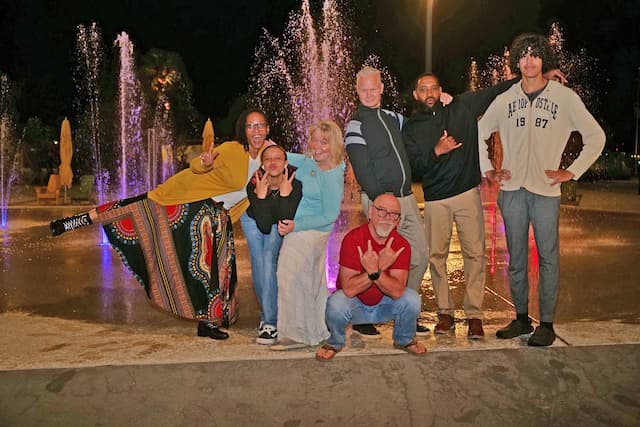The Marks of the Meta-Church

How can we tell a true church from a false church? Or a healthy church from one that’s weak and incomplete?
During the Reformation, as Protestants were separating from the Roman Catholic system, they were forced to ask these questions. Spurious sects sprouted up all around them, so they needed to develop a set of criteria, or “marks,” to discern a true church from a false church.
While they formulated those marks in different ways, many of them determined from Scripture that correct administration of the two sacraments and church discipline were all necessary marks of any true church.[1]
It should be of concern, then, that a virtual “church” can practice none of those marks legitimately.
Baptism
Moments before His ascension, Jesus commanded His disciples, “Go therefore and make disciples of all the nations, baptizing them in the name of the Father and the Son and the Holy Spirit, teaching them to observe all that I commanded you” (Matthew 28:19–20).
Of Christ’s command to baptize, John MacArthur explains, “The baptism of John the Baptist symbolized repentance of sin and turning to God (Matt. 3:6). As instituted by Christ, however, baptism became an outward act of identification with Him through faith, a visible, public testimony that henceforth one belonged to Him.”[2]
We see Peter promptly obey Christ’s command to baptize in his famous Pentecost sermon. As his listeners were convicted by the sermon, Peter exhorted them, “Repent, and each of you be baptized in the name of Jesus Christ for the forgiveness of your sins” (Acts 2:38).
Again Pastor John explains,
By calling on “each” of them to “be baptized in the name of Jesus Christ” Peter does not allow for any “secret disciples” (cf. Matt. 10:32–33). Baptism would mark a public break with Judaism and identification with Jesus Christ. Such a drastic public act would help weed out any conversions which were not genuine. . . . Baptism was always “in the name of Jesus Christ.” That was the crucial identification, and the cost was high for such a confession.[3]
Legitimate baptism entails identification. When God saves sinners, their first act of obedience is to openly identify themselves with Christ and His body. That pattern is evident throughout the book of Acts (Acts 2:41; 8:12; 10:47–48; 16:31–34). The early church followed that pattern as well. One historian writes,
A “Christian” in the ancient church was a person who formally accepted all the responsibilities of the faith through water baptism. This rite, carried out before the gathered community, was the unmistakable sign of entrance into the church. It was an oath of allegiance and citizenship, akin to the oath a soldier swore when he left civilian life and entered the service of a new commander.[4]
Much more should be said about baptism, but the point is clear: Baptism publicly identifies the believer with Christ and His church. Yet in 2021, Michael Todd’s Transformation Church invited people to be baptized “right where you are” via livestream. Even more bizarre is the recent use of virtual reality avatars for baptism.
In the first case, the baptism is private and shows no identification with Christ or the church. In the second case, not only is it private, but a baptism doesn’t actually take place—it’s nothing more than a simulation. In both cases, a key function of baptism is utterly lost.
The Lord’s Table
In addition to the ordinance of baptism, Scripture also commands believers to observe the Lord’s Table, making that another mark of the true, healthy church.
As with baptism, the Lord’s Table was also instituted personally by Christ (cf. Matthew 26:26–29). And as such, John MacArthur says it “symbolizes the believer’s union with Christ (cf. Rom. 6:5) and the unity that believers share with one another (cf. Eph. 4:5; 1 Cor. 10:16–17).” [5]
Paul himself explains how the Lord’s Table symbolizes the unity of the church when he writes, “Since there is one bread, we who are many are one body; for we all partake of the one bread” (1 Corinthians 10:17).
Dustin Benge explains, “The early church passed around one common loaf, and members would pinch a small piece off to celebrate the supper. Through this visible representation, Paul reminds them that they are one body.”[6]
On the purpose of this practice, Pastor John explains,
Paul’s words are so framed as to assume that participating in the Lord’s Supper is a regular practice of faithful Christians. It is commanded by our Lord (Luke 22:19; 1 Cor. 11:24–25) to remind us of His sacrifice for us and of our oneness with Him and with fellow believers. When believers participate they are “sharing in the blood of Christ” and “sharing in the body of Christ.” It is communing with the Lord and with His people. Celebrating our common salvation and eternal life is the ultimate fellowship of believers while we are on earth, and reflects the perfect fellowship we will have in heaven.[7]
He then adds, “When we properly share in Communion we spiritually participate in fellowship with Jesus Christ and with other believers. It is much more than a symbol; it is a profound celebration of common spiritual experience.”[8]
For this reason, Dustin Benge concludes, “The Lord’s Table is one of the foremost places within the church to gather in mutual love and reconciliation. This is why the Lord’s Supper is not to be celebrated alone, for it is a congregational meal to demonstrate and foster genuine love among the people of God.” [9]
Just as with baptism, the communal nature of the Lord’s Table is completely lost when done individually or virtually.
Church Discipline
Church discipline, like baptism and the Lord’s Table, was instituted by Christ (Matthew 18:15–20). The process and practice of church discipline is too much to cover in this post (you can find a longer explanation here), but its purpose is extremely relevant when it comes to considering the meta-church.
Because discipline is often misunderstood, let’s recall what its purpose is not. John MacArthur writes, “The goal of church discipline is not to throw people out, embarrass them, be self-righteous, play God, or exercise authority and power in some unbiblical manner. The purpose of discipline is to bring people back into a pure relationship with God and with others in the assembly.” [10]
In addition to restoring wayward Christians, church discipline also preserves the purity of the church. When sin is evident, it cannot be allowed to take root (Galatians 5:9; 1 Corinthians 5:6). Pastor John says, “The purity of the church is every Christian’s concern. When we become aware of impurity that challenges the church, we all need to humbly and lovingly confront it.” [11]
That kind of accountability is vital for the health of the church.
However, virtual church disconnects people from their real lives to the point that such accountability is impossible. Users of virtual reality may spend copious amounts of time online, but they will never have the accountability that a local church offers.
Marks of the Meta-Church
As we noted in a previous post, proponents of virtual church are frighteningly detached from Scripture. This reality is emphasized by how they cavalierly redefine or outright ignore Christ’s instruction to His church.
Our Lord instituted three practices for the church to follow: baptism, the Lord’s Table, and church discipline. But virtual church can offer only baptism without identification, communion without community, and a profound lack of accountability.
Whatever marks the meta-church may have, it is clear that they did not receive them from Christ.










